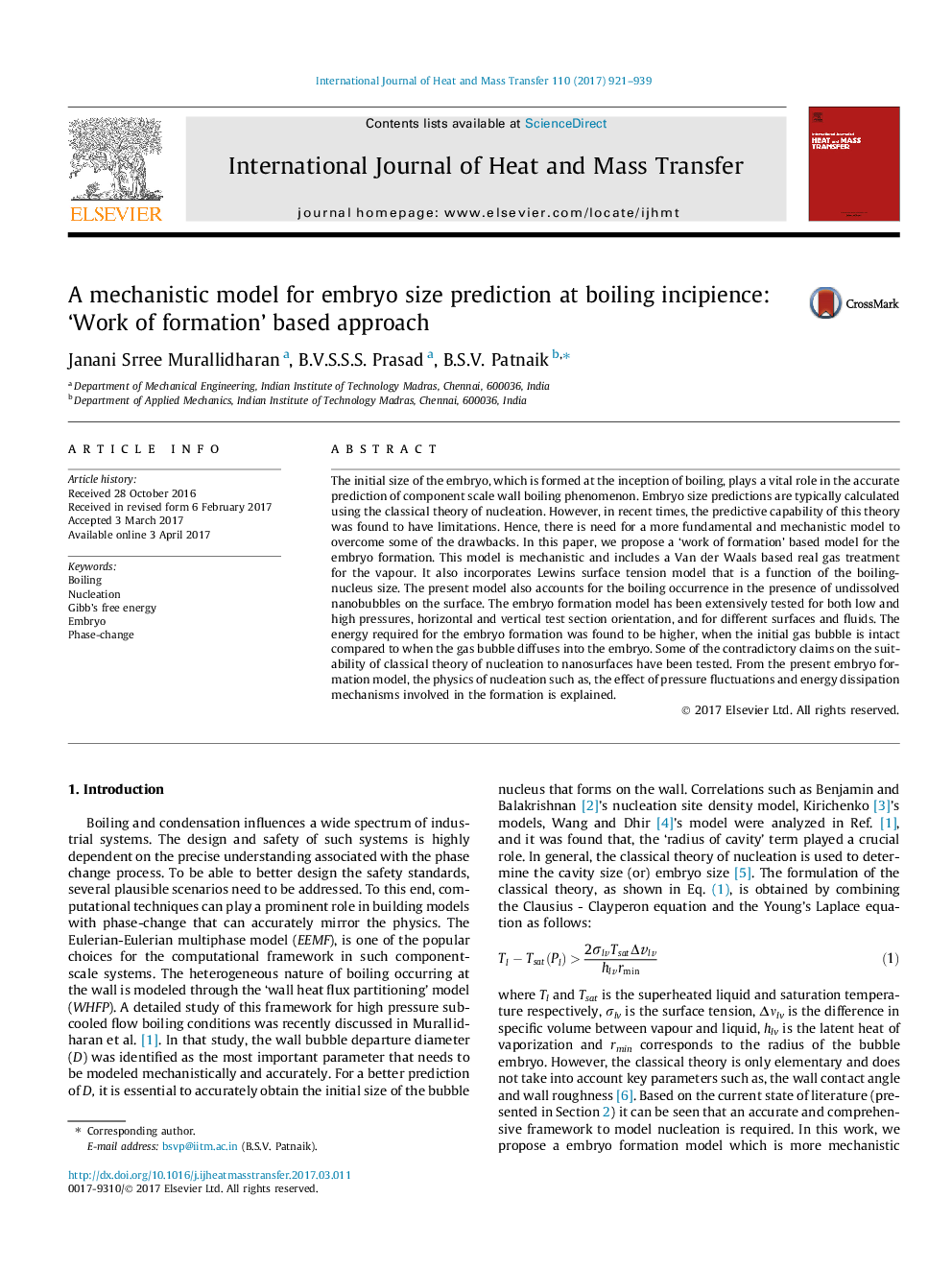| Article ID | Journal | Published Year | Pages | File Type |
|---|---|---|---|---|
| 4993620 | International Journal of Heat and Mass Transfer | 2017 | 19 Pages |
Abstract
The initial size of the embryo, which is formed at the inception of boiling, plays a vital role in the accurate prediction of component scale wall boiling phenomenon. Embryo size predictions are typically calculated using the classical theory of nucleation. However, in recent times, the predictive capability of this theory was found to have limitations. Hence, there is need for a more fundamental and mechanistic model to overcome some of the drawbacks. In this paper, we propose a 'work of formation' based model for the embryo formation. This model is mechanistic and includes a Van der Waals based real gas treatment for the vapour. It also incorporates Lewins surface tension model that is a function of the boiling-nucleus size. The present model also accounts for the boiling occurrence in the presence of undissolved nanobubbles on the surface. The embryo formation model has been extensively tested for both low and high pressures, horizontal and vertical test section orientation, and for different surfaces and fluids. The energy required for the embryo formation was found to be higher, when the initial gas bubble is intact compared to when the gas bubble diffuses into the embryo. Some of the contradictory claims on the suitability of classical theory of nucleation to nanosurfaces have been tested. From the present embryo formation model, the physics of nucleation such as, the effect of pressure fluctuations and energy dissipation mechanisms involved in the formation is explained.
Keywords
Related Topics
Physical Sciences and Engineering
Chemical Engineering
Fluid Flow and Transfer Processes
Authors
Janani Srree Murallidharan, B.V.S.S.S. Prasad, B.S.V. Patnaik,
